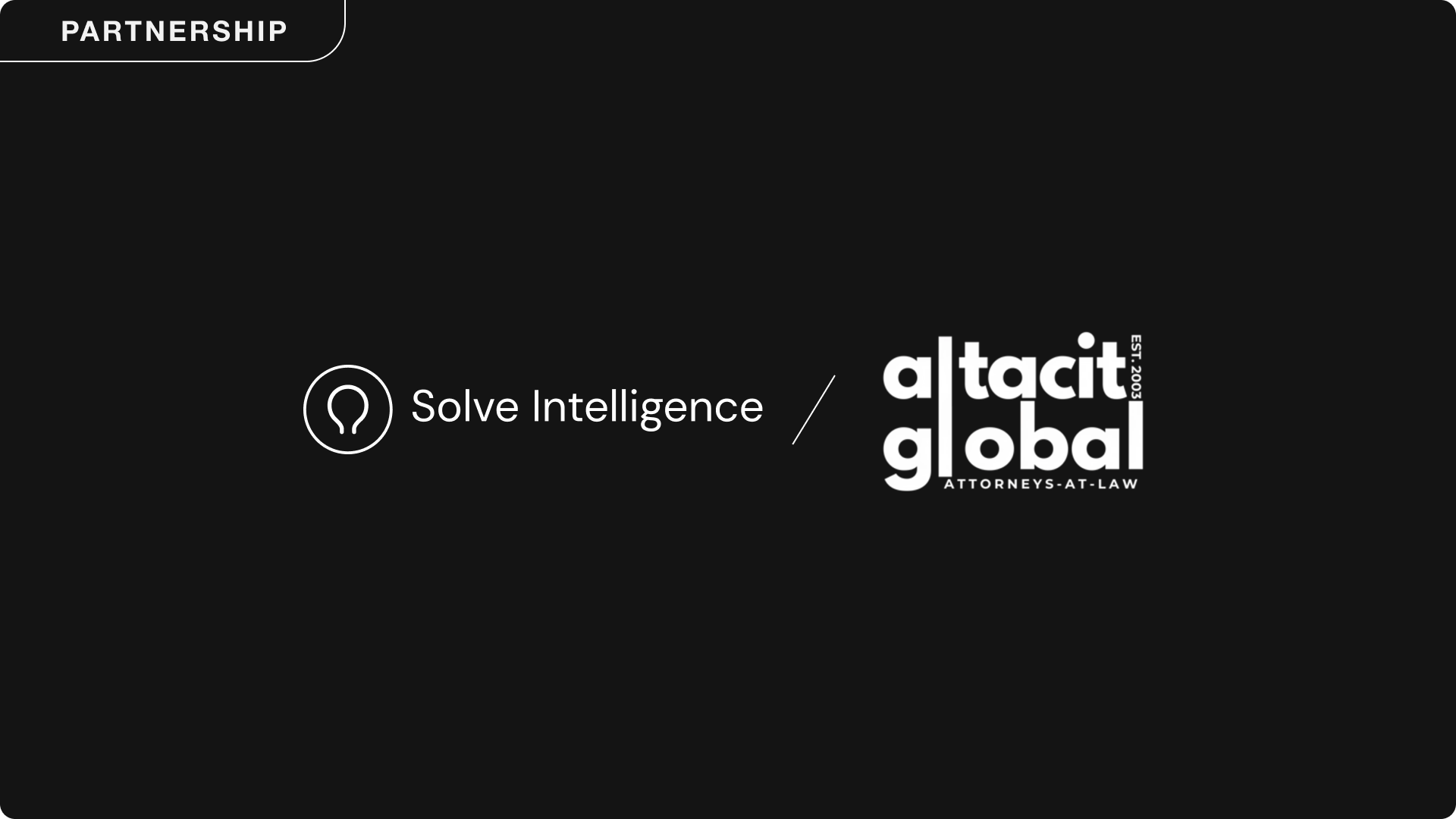10 Tips for Patent Attorneys to use AI effectively
Patent attorneys often face high workloads, tight deadlines, and the pressure to deliver impeccable work. AI-powered tools like Solve Intelligence’s Patent Copilot are revolutionising how patent applications are drafted and prosecuted, offering attorneys significant efficiency gains. Here’s how to make the most of these tools and transform your workflow.
.avif)
1. Give Clear Instructions
The quality of AI-generated outputs often depends on how well you frame your instructions or prompts to the AI. Try breaking your instructions up into logical steps, and give examples where possible. Be concise and precise - there’s no need for manners when instructing the AI!
2. Provide Key Context
Providing AI with some key context documents can focus the AI on a specific task, making its output more relevant. Users can provide our Patent Copilot with an invention disclosure, and reference prior art to focus the AI on the inventive concept of the invention. Focusing on providing the most important context, rather than referring to many less-related documents, can result in more accurate and tailored outputs from the AI, saving time on revisions.
3. Add Figures to Provide Additional Information
Visual elements such as figures can greatly enhance the AI’s understanding of your invention. Whilst some AI tools do not support Figure analysis, you can upload diagrams, flowcharts, or even sketches when using Patent Copilot. Adding figures early will help the AI generate more contextually appropriate text, and the Patent Copilot will even reference the figures as required when drafting your patent specification description.
4. Save Bespoke Instructions for Repeated Use
Some clients may require a particular drafting style. Similarly, a draft to a chemical composition may require a different approach to a draft to a computer-implemented invention. Saving a set of AI instructions to accommodate these differences will allow you to adapt quickly and use AI more efficiently. Patent Copilot allows you to do this very simply by building and saving templates for use with AI. The templates can include custom AI instructions, custom boilerplate, and more.
5. Break Down Complex Drafting Tasks
Patent Copilot has been designed to let you generate discrete sections of a patent application, such as the background, summary, and claims, separately. This modular approach simplifies revisions and ensures that the patent attorney stays in control of the drafting process throughout. Breaking down your instructions and revisions on a section-by-section basis usefully provides further context to the AI during the drafting process, which improves the accuracy and relevance of the AI output.
6. Utilise Real-Time Error Detection
Mistakes when drafting may include antecedent basis issues, lack of support for claim features, or non-use of certain reference signs when referring to the figures. Such issues can lead to objections during prosecution. When you’ve drafted your application, use AI to check for these issues before filing your application. Patent Copilot has a dedicated review functionality to do this for you.
7. Save Time with Automatic Document Formatting
Formatting and/or adjusting patent applications for specific jurisdictions can be tedious, but you can use AI to help with this. Patent Copilot can be set to a specific jurisdiction when using the AI and on export of your application, to automatically adjust to the regulations of that specific jurisdiction. Selecting the appropriate jurisdiction before drafting will help the AI draft the application appropriately for that jurisdiction right away.
8. Focus on Strategic Tasks
By automating repetitive drafting tasks, such as the background, summary, and detailed description sections of an application, AI can free you to concentrate on higher-level work - meeting with inventors more to obtain better invention disclosures, developing robust claims that follow your client’s strategy, or advising on future filing plans. Drafting your own robust claims directly in our document editor will allow Patent Copilot to obtain even further context of the invention, enhancing the AI’s output in other sections and helping to improve the overall quality of your applications.
9. Integrate AI into Collaborative Workflows
Whilst most off-the-shelf AI tools are configured for use by individuals only, Patent Copilot is designed to be used collaboratively between colleagues. Share templates and drafts with team members, allow them to make edits, and use AI suggestions to review and finalise documents efficiently.
10. Stay Updated on New Features
Technology and particularly AI is constantly evolving, and here at Solve Intelligence we add new features to our Patent Copilot every week. Staying informed about these updates allows you to seamlessly upgrade your workflow to utilise our newest features. Refer to our customer communications, or simply get in touch with our dedicated IP team of patent attorneys and legal professionals to discuss any part of the Patent Copilot.
By following the above tips, you can unlock the full potential of AI in your drafting and prosecution process, making efficiency gains that leave you more time to focus on the important aspects.
AI for patents.
Be 50%+ more productive. Join thousands of legal professionals around the World using Solve’s Patent Copilot™ for drafting, prosecution, invention harvesting, and more.

.png)


